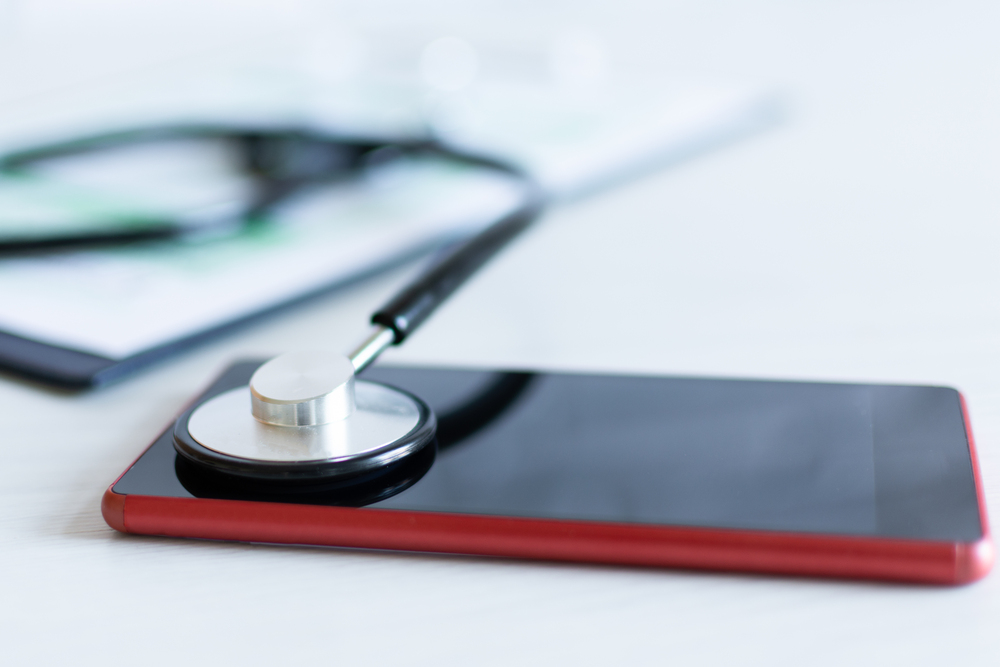 Written by Veronica Turner.
Written by Veronica Turner.
Adventure-based therapy uses outdoor activities to help individuals improve their physical and mental health. It taps into the natural human desire for exploration and challenge and incorporates hiking, climbing, orienteering, and other adventure sports.
This approach aims to build confidence and encourage movement in engaging ways. According to it, focusing on practical experiences outdoors allows patients to push their boundaries while feeling connected with nature.
Today’s article will examine how adventure therapy integrates with physical health recovery programs. We’ll also explore various strategies that utilize recreational activities as therapeutic tools for healing processes.
Whether you’re considering new methods for patient care or looking to broaden your understanding of existing ones, read along as we unravel this innovative approach’s potential to enhance recovery outcomes.
What is Adventure Therapy?
The term defines a therapeutic approach involving experiential outdoor activities to promote psychological, physical, and social wellness.
Even though it sounds like a modern approach to mental health, we can trace its practices back to the 1800s. Back then, physicians often recommended fresh air and outdoor activities for various ailments, especially mental health ones. The belief was that nature could restore balance and health.
Based on this belief, a few healthcare institutions that treated mental illnesses (like Friends Hospital in Philadelphia, which still uses nature as a healing factor) decided to create a holistic environment that would allow patients to connect with nature.
The results were so positive that the idea persisted until the 21st century, when it became what we now call adventure therapy.
Who Is It For?
Adventure therapy is aimed at people suffering from anxiety, depression, PTSD, or trauma, but it can be efficient in treating substance abuse or helping people deal with loss.
Studies have shown that outdoor activities like hiking or climbing promote grounding techniques, which help participants dealing with PTSD (especially combat-related) reconnect with their bodies in the present moment.
For those dealing with substance use disorders, adventure therapy encourages healthy coping mechanisms.
In this case, walking in the Picos de Europa (for example) allows patients to face challenges that mimic life’s difficulties without substances. Additionally, they can connect with other people since this is a hut-to-hut trek that includes country houses and old farms managed by locals.
There are also studies that show physical exercise through mountain trekking, or hiking can help reduce the risk in suicidal patients.
Youth experiencing behavioral issues often benefit from these structured outdoor interventions. The setting encourages teamwork and communication while offering safe spaces to express emotions constructively.
Adventure therapy can also be a great option for physical health recovery sessions and boosting fitness. These activities help strengthen participants’ cardiovascular systems, improve flexibility, and build muscular strength.
As a result, participants can sleep better and boost energy levels, which helps speed up healing and recovery.
Lastly, some studies found that adventure therapy also supports people managing eating disorders by fostering positive body awareness through non-competitive physical activities.
How Does It Work?
Adventure therapy is not meant to replace traditional treatments. Its primary purpose is to complement existing therapies by boosting self-esteem, improving emotional regulation skills, and nurturing interpersonal relationships within natural settings.
This method is particularly beneficial for those who thrive on experiential learning or are open to non-traditional therapies. Also, depending on activities and time length, there are several different types of adventure therapy.
The main types are:
- Wilderness therapy – An immersive, part-time program set in remote natural settings. Over about 10 weeks, participants engage in group activities that encourage personal growth and self-discovery. Groups remain consistent throughout the program unless someone exits, fostering a stable community environment.
- Adventure-based therapy – Usually happens near existing treatment centers, such as residential or intensive outpatient programs. It offers flexibility since group members may vary over time as individuals enter or leave treatment. Activities can occur outdoors or indoors, accommodating diverse therapeutic needs within a familiar setting.
- Long-term residential camping – Programs extend up to a year and place individuals in outdoor camps or mobile units for an extended period. Participants learn valuable skills like healthy peer interactions and coping mechanisms for everyday stressors. This approach encourages introspection by highlighting the effects of one’s actions within supportive communities.
Regardless of type, the immersive nature of outdoor activities promotes self-reflection. It allows participants to step outside their comfort zones in supportive environments, enhancing self-esteem and coping skills.
What Activities Are Part of Adventure Therapy?
Activities will vary from one program to another as therapists must take into account participants’ physical condition and individual preferences. Plus, every person’s response to diverse stimuli is unique.
In general, adventure therapy includes activities such as:
- Hiking and/or trekking
- Backpacking
- Swimming
- Camping
- Rock climbing
- Cycling or mountain biking
- Paddleboarding
- White water rafting
- Obstacle course
- Kayaking or canoeing
- Orienteering
The main purpose of these activities is to promote physical fitness and mindfulness while building communication and enhancing problem-solving skills. Some more challenging activities, like rock climbing or white water rafting, are meant to challenge fears and build self-confidence.
Is Adventure Therapy Effective?
Adventure therapy thrives on engaging participants beyond traditional therapy’s constraints. Its effectiveness is rooted in several core principles that promote personal growth and insight.
For instance, one standout aspect is the action-oriented approach. Unlike conventional therapy, which can feel isolated and confined, this method unfolds outdoors, allowing therapists to observe more. Body language and interactions are essential components of understanding the individual holistically.
Additionally, adventure therapy nudges people out of their comfort zones by placing them in unfamiliar environments. This shift fosters fresh perspectives and reduces resistance to change, which can be critical for meaningful transformation.
Introducing controlled stress also plays a crucial role. Participants face challenges that reveal their capacity for positive change, reinforcing confidence in new behaviors and attitudes. The setting allows therapists to comprehensively assess clients’ natural behaviors by observing patterns outside standard settings.
Small group dynamics are another powerful element. These groups nurture community bonds where mutual needs are acknowledged, demonstrating collective progress over time. Furthermore, focusing on successes rather than deficits encourages strength-based growth.
Lastly, with therapists participating equally in activities alongside clients, both parties have a sense of equality. This changes the narrative where the therapist is the clear observer, and the patient is the one being analyzed, enhancing rapport and engagement.
In summary, yes, adventure therapy is effective. It promotes growth by engaging participants in real-world settings, reducing resistance to change, encouraging strength-based development, and building community through small-group interactions.
Pros and Cons of Adventure Therapy
Based on existing research and literature, adventure therapy offers numerous benefits. It fosters a sense of responsibility and encourages building positive relationships. Participants develop social skills such as communication and conflict resolution, which enhance cooperation with others.
The therapy also boosts self-awareness and confidence while increasing physical and psychological resilience. It promotes active engagement in therapeutic processes, encouraging openness and emotional exploration.
Real-life challenges provide meaningful opportunities for growth, decreasing depression and anxiety symptoms and improving overall well-being. Additionally, adventure therapy teaches healthy coping mechanisms, including stress management techniques.
Still, there are a few aspects both individuals seeking help and therapists should consider. First, there’s the accessibility issue. Remote locations and outdoor settings may not be easily accessible for everyone, especially those with physical limitations or on a tight budget.
Speaking of budget, these programs can be quite expensive due to logistics, trained staff, and specialized equipment. Short-term programs might range from $500 to $2,000 weekly, depending on program length, location, and services offered.
On the other hand, wilderness or residential camping programs often run higher due to extended durations and specialized staff, with costs reaching up to $30,000 or more for several months.
There are also some additional risk factors that don’t show up in traditional therapy sessions. Outdoor activities carry inherent risks that need careful management and planning. Plus, unfavorable weather conditions can mess up a program’s success, making participation challenging.
Lastly, not all individuals thrive in unstructured environments; some may find traditional therapy more effective.
All these factors are essential when designing the best therapeutic approach for each individual’s needs.
Is Adventure Therapy Here to Stay?
Given that we’ve been practicing adventure therapy, in one way or another, since the 1800s, it’s safe to say that this approach to mental and physical health will continue to help many people moving forward.
Technology also plays a key role in this evolution. For instance, with the help of virtual reality, therapists can now simulate outdoor experiences for those unable to access traditional settings, expanding reach and inclusivity.
Integrating data analytics will make it easier to create personalized treatment plans by simply tracking participants’ progress through wearable devices during activities. This real-time feedback aids therapists in tailoring interventions effectively.
Sustainability becomes central as programs emphasize environmental stewardship alongside personal growth. Participants learn conservation principles while engaging with nature, fostering responsibility toward both their well-being and the planet’s health.
Collaborations across disciplines enhance this approach further – blending elements from art therapy or mindfulness practices introduces holistic dimensions into adventure-based experiences.
Increasingly diverse populations are finding value here, too – from veterans reintegration into civilian life to corporate teams seeking leadership development outside conventional boardrooms.
Wrap Up
Adventure therapy transforms lives by immersing participants in nature’s healing embrace. It offers unique challenges that encourage personal growth and resilience, empowering individuals to confront real-world obstacles.
This approach revitalizes therapeutic practices, blending traditional methods with innovative outdoor experiences for a future where healing and exploration go hand-in-hand.
Author Bio: Veronica Turner is a health and lifestyle writer with over 10 years of experience. She creates compelling content on nutrition, fitness, mental health, and overall wellness.
References
Jacobs, |By Sam. (2024, June 11). Human potential movement – what is IT & how it started. Spread Great Ideas. https://spreadgreatideas.org/glossary/human-potential-movement/
Lackey, N. Q., Tysor, D. A., McNay, G. D., Joyner, L., Baker, K. H., & Hodge, C. (2019). Mental health benefits of nature-based recreation: a systematic review. Annals of Leisure Research, 24(3), 379–393. https://doi.org/10.1080/11745398.2019.1655459
Gelkopf, M., Hasson-Ohayon, I., Bikman, M., & Kravetz, S. (2013). Nature adventure rehabilitation for combat-related posttraumatic chronic stress disorder: a randomized control trial. Psychiatry research, 209(3), 485–493.
https://www.sciencedirect.com/science/article/abs/pii/S0165178113000474
Sturm, J., Plöderl, M., Fartacek, C., Kralovec, K., Neunhäuserer, D., Niederseer, D., Hitzl, W., Niebauer, J., Schiepek, G., & Fartacek, R. (2012). Physical exercise through mountain hiking in high-risk suicide patients. A randomized crossover trial. Acta psychiatrica Scandinavica, 126(6), 467–475. https://doi.org/10.1111/j.1600-0447.2012.01860.x
Bowen, D. J., Crisp, S. J. R., & Neill, J. T. (2016, May 13). Wilderness adventure therapy affects the mental health of Youth participants. Evaluation and Program Planning. https://www.sciencedirect.com/science/article/pii/S0149718915300094
Arnold, S. C. (1994). Transforming Body Image Through Women’s Wilderness Experiences. Women & Therapy, 15(3–4), 43–54. https://doi.org/10.1300/J015v15n03_05
Please also review AIHCP’s Holistic Nursing Certification programs and see if it meets your academic and professional goals. These programs are online and independent study and open to qualified professionals seeking a four year certification

 Written by Veronica Turner.
Written by Veronica Turner. Written by Nadine Westwood.
Written by Nadine Westwood. Written by Stephen Carter.
Written by Stephen Carter. Author’s Bio:
Author’s Bio: Written by Vivian Kane.
Written by Vivian Kane. Written by Esme Wang.
Written by Esme Wang.
 Written by Esme Wang.
Written by Esme Wang. Written by Esme Wang.
Written by Esme Wang. Written by Esme Wang
Written by Esme Wang